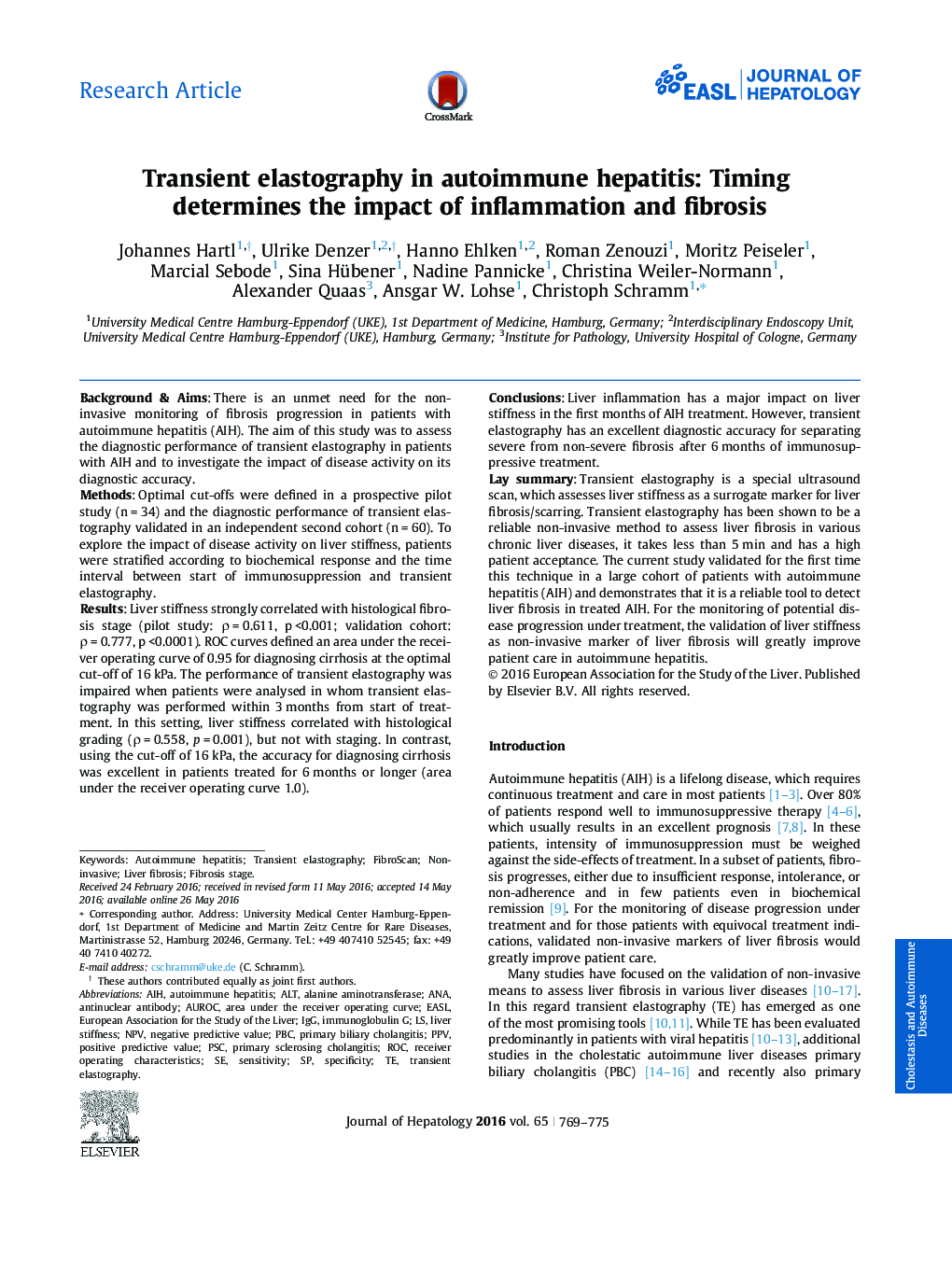| کد مقاله | کد نشریه | سال انتشار | مقاله انگلیسی | نسخه تمام متن |
|---|---|---|---|---|
| 5660801 | 1407498 | 2016 | 7 صفحه PDF | دانلود رایگان |

Background & AimsThere is an unmet need for the non-invasive monitoring of fibrosis progression in patients with autoimmune hepatitis (AIH). The aim of this study was to assess the diagnostic performance of transient elastography in patients with AIH and to investigate the impact of disease activity on its diagnostic accuracy.MethodsOptimal cut-offs were defined in a prospective pilot study (n = 34) and the diagnostic performance of transient elastography validated in an independent second cohort (n = 60). To explore the impact of disease activity on liver stiffness, patients were stratified according to biochemical response and the time interval between start of immunosuppression and transient elastography.ResultsLiver stiffness strongly correlated with histological fibrosis stage (pilot study: Ï = 0.611, p <0.001; validation cohort: Ï = 0.777, p <0.0001). ROC curves defined an area under the receiver operating curve of 0.95 for diagnosing cirrhosis at the optimal cut-off of 16 kPa. The performance of transient elastography was impaired when patients were analysed in whom transient elastography was performed within 3 months from start of treatment. In this setting, liver stiffness correlated with histological grading (Ï = 0.558, p = 0.001), but not with staging. In contrast, using the cut-off of 16 kPa, the accuracy for diagnosing cirrhosis was excellent in patients treated for 6 months or longer (area under the receiver operating curve 1.0).ConclusionsLiver inflammation has a major impact on liver stiffness in the first months of AIH treatment. However, transient elastography has an excellent diagnostic accuracy for separating severe from non-severe fibrosis after 6 months of immunosuppressive treatment.Lay summaryTransient elastography is a special ultrasound scan, which assesses liver stiffness as a surrogate marker for liver fibrosis/scarring. Transient elastography has been shown to be a reliable non-invasive method to assess liver fibrosis in various chronic liver diseases, it takes less than 5 min and has a high patient acceptance. The current study validated for the first time this technique in a large cohort of patients with autoimmune hepatitis (AIH) and demonstrates that it is a reliable tool to detect liver fibrosis in treated AIH. For the monitoring of potential disease progression under treatment, the validation of liver stiffness as non-invasive marker of liver fibrosis will greatly improve patient care in autoimmune hepatitis.
179
Journal: Journal of Hepatology - Volume 65, Issue 4, October 2016, Pages 769-775